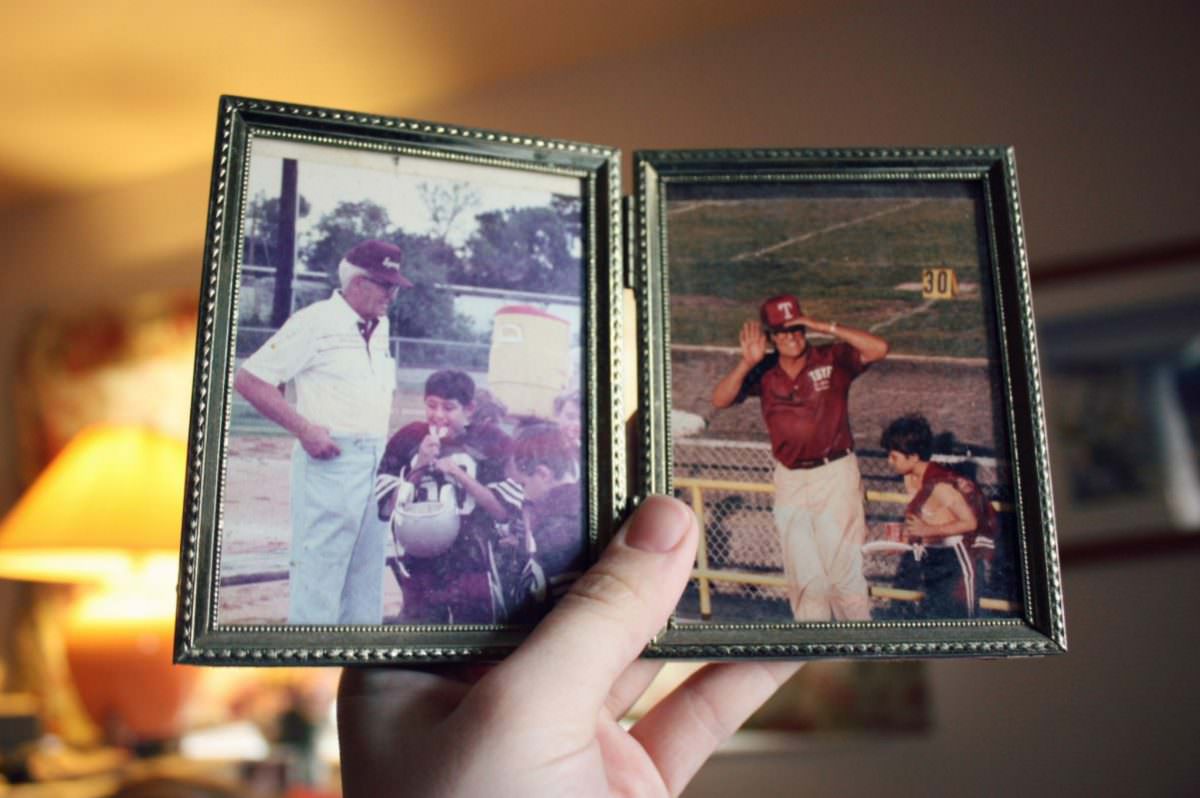Family
Scandinavia: Can The New "Parental Team" Replace Marriage?
A 2012 statistical report profiled a cohort of 34,000 Swedish heterosexual couples who had their first baby in 2000, and followed their progress longitudinally until 2010.

We all know the statistics: Children of divorced or separated parents underperform in school, are more likely to abuse drugs and alcohol, and have lower social mobility. A full list of the negative effects would require a lot of space. But the takeaway is that unless your partner is abusive or your home has become seriously dysfunctional, there are good reasons to stick it out for the children.
But what if there were a way around these negative outcomes? Imagine some new, postmodern “parental team” that can take the place of a married couple when it comes to raising children.
That is the new concept emerging from Sweden, where divorce has become common and socially accepted, with children moving frequently between two parental homes. According to the new book Divorcing With Children: Parents in Two Homes (Att skiljas med barn: föräldrar i två hem) by Swedish child psychologist, researcher and university lecturer Malin Bergström, research suggests that kids who move between two homes do almost as well as their peers with parents who live together. Her work suggests that a new, guilt-free kind of divorce seems possible, thanks to a combination of Scandinavian gender equality and classic social engineering. Or so we are invited to believe.
A 2012 statistical report profiled a cohort of 34,000 Swedish heterosexual couples who had their first baby in 2000, and followed their progress longitudinally until 2010. As the results were summarized by University of Gothenburg researchers in 2015: “The average length of cohabitation before having the first child was three years. About a third of the couples were married before the birth of the first child, and the most common time to marry was after two years of cohabiting. Thirty percent of the sample were separated/divorced in 2010, and the average time for separation/divorce was four years and eight months after the birth of the first child.”

But children to separated parents do not always grow up in what has traditionally been described as “one-parent households,” a category that often is linked to poor socioeconomic outcomes. Among Swedish children between the ages of 6 and 12 who have divorced parents, roughly half move regularly between their parents’ homes. A third spend an equal amount of time living with each parent—usually moving between the two homes every week. Indeed, this equal form of distribution, commonly known as Joint physical custody (JPC), has become the baseline standard in custody proceedings (unless there is suspicion of abuse or neglect, or the divorced parents agree to other arrangements). It makes no difference who initiated the divorce. Thus, a mother who is abandoned by her husband for any reason generally will be required to accept separation from her children as well, one week at the time, every second week. Following Swedish ideals of absolute gender equality, the policy is applied in a sex-symmetrical fashion (though older children have a legal right to weigh in on the decision).
“Sweden provides a unique situation for addressing these questions because Swedish parents are much more likely than parents in other advanced nations to share physical custody of their children after they separate,” reported a trio of researchers in a 2015 article for the Journal of Divorce & Remarriage. “In Sweden, JPC has become as common as living mostly with the mother after parents separate. The proportion of Swedish children in JPC was about 1 percent of children with separated parents in the mid-1980s, but is now between 35 percent and 40 percent. Of all children between 12 and 15 years of age, 1 in 10 are in JPC…Indeed, for 3-year-old children, JPC is nearly twice as common as SPC [Single-Parent Custody], at least among Swedish-born and well-educated parents…When Swedish parents separate, they also tend to live in nearby neighborhoods so that the distance between their homes is relatively short.” (Summarizing the work of others, the same researchers report that the share of children in JPC is about 25 percent in Norway and Denmark, and “under 20 percent” in UK.)
These children often spend much of their life with people who once were called stepparents, and stepsiblings, but who are now sometimes called “bonus” family members (a term that Gwyneth Paltrow helped popularize earlier this year). It is not uncommon for Swedish schools to address their correspondence to “adults” or ”caregivers,” rather than “parents.” One of the country’s most popular TV shows in recent years is The Bonus Family (Bonusfamiljen), which centers around the complications that emerge when two recently divorced Swedish parents form a new household.
To understand these developments, it helps to revisit the so-called “Swedish theory of love,” described by influential Swedish historians Lars Trädgård and Henrik Berggren as a form of social contract that “is only possible between individuals who are independent and equal.” The contract is about emancipation, but with a twist. In Sweden, individuality springs from the state. Without it, emancipation is not possible. Equality and freedom of choice is in itself made possible by a form of social engineering that the authors describe as “statist individualism,” under which high levels of state support serve to enhance, rather than challenge, citizens’ personal autonomy. More broadly, this typically Swedish approach to policy, informed in equal measure by optimism and paternalism, is animated by an institutionalized sense of national confidence in experts who use scientific methodology to improve society from one generation to the next. The overall effect of these ideas has been a weakening of many of the institutions that once mediated relations between state and citizen—including churches, charities and even families—since they are seen as dispensable in a country where individuals interact directly and regularly with a benign state.
Central to this “cradle-to-grave” arrangement are such initiatives as universal daycare, a comprehensive program of direct student loans to teenagers and young adults, and the creation of a special ombudsman to protect children’s rights. The very language of public discourse now reflects such expectations: When the current government recently introduced the idea of making it mandatory for parents to send their young children to daycare in order for immigrant children to learn Swedish early on, this was presented as vindication of “the right to compulsory pre-school.” Implicit in these projects is the idea that a reliance on traditional forms of community and upbringing sets one at risk of oppression and inequality, while the welfare state is idealized as a liberating agent that frees citizens from hidebound social norms.
This was the context for the publication of Bergström’s Divorcing With Children. Addressing the new “parental teams”, Bergström advises parents to give up the idea that they have a basic “right” to care for or control their children. Rather, parenthood is about obligations.
Bergström notes that when the Swedish divorce rate began to increase decades ago, experts worried that children would become rootless and stressed. This accompanied concerns about the breakdown in traditional marriage: Two years ago, extramarital births began outnumbering births inside marriage in not only Sweden, but also Norway and Denmark. But the data Bergström cites seem to suggest that Swedish children alternating between households are, in general, more content than children living with only one parent. Based on her research at the Centre for Health Equity Studies (CHESS) at the University of Stockholm, in fact, she concludes, as noted above, that children alternating between parents’ homes do almost as well as children living full-time with both parents, and much better than those living with the mother or father alone. There is an undertone of national self-satisfaction to the book: Thanks to the natural adaptability of children, and the great Swedish social safety net, no one splits up quite as well as Mr. and Mrs. Johansson.
But is the true picture as rosy as the one Bergström shows us? It’s hard to know, because the research data collected by CHESS contain many variables, and it isn’t obvious that all of them are entirely relevant. (One listed indicator of well-being, for instance, is a child’s subjective self-evaluation of sleep quality: There are all sorts of reasons why people who have different living arrangements may judge their sleep quality to be better, or worse, compared to some arbitrary benchmark.) But my larger critique is that while Bergström is concerned with the effects of state-mandated and -enabled JPC arrangements, the positive outcomes we are observing may simply be an artefact of the growing wealth and privilege of divorcing Swedish parents—especially since many poor households can’t afford to split up, one home being cheaper than two.
As Robert Putnam, David Brooks, Charles Murray and numerous other social scientists have noted in recent decades, the general trend is that wealthier, better educated parents generate better social outcomes for their offspring than other parents. They also operate safer, more functional households than similarly situated poorer parents, even when families split up. As Branko Milanovic notes in his book Capitalism, Alone: The Future Of The System That Rules The World, this inequality is a growing, self-reinforcing phenomenon: Wealthy, well-educated adults increasingly marry other wealthy, well-educated adults, and provide their children with the advantages necessary to become wealthy and well-educated themselves. The rich are not just better off in material comfort and physical safety; they also take part in more extracurricular activities, sports and advanced courses; and have access to more supports when they suffer setbacks, including those setbacks associated with family breakdown and reconstruction. (Often, a rich, stable household will break up into two other rich and stable households.) And so, as Putnam has written, “it is hardly surprising that recent research has suggested that the places in America where single-parent families are most common are the places where upward mobility is sluggish.”
As the traditional nuclear family becomes less dominant in Scandinavia, it’s worth asking how the normalization of divorce will affect society more generally. Bergström may be correct that conservative social panic over these trends is unwarranted. But first, we need to ensure that measured effects are not simply an artefact of self-selection bias among divorcing couples, or of the growing wealth of Sweden in general. We also need to ensure that enthusiasm for the current trend does not simply represent an ideological extension of Swedish enthusiasm for social engineering.
Perhaps most importantly, we need to remember that divorce remains a traumatic event in the lives of many people—children especially. And while it is tempting to imagine that this trauma can be mitigated, or even eliminated, by the right set of social policies, this will always be a pipe dream. There are some sorrows and challenges that no government can ever fully prevent or repair. Even in Sweden.






